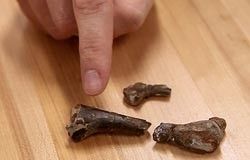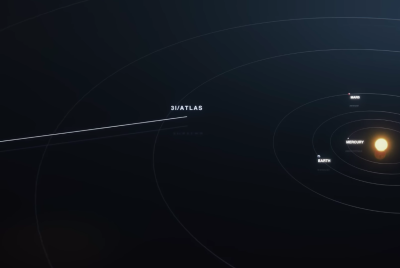Baby Ornithopod Dinosaurs were Tasty Treat for Tiny Crocodiless

Prehistoric crocodiles dined on the babies of a newly identified species of dinosaur, researchers have found.
Plan- eating baby ornithopod dinosaurs were a tasty treat for crocodyliforms, evidence found in southern Utah has shown.
Clint Boyd and his team from the South Dakota School of Mines and Technology discovered the new species while conducting research into crocodile diets.
They found that one dinosaur species eaten by crocodiles was not known to scientists. The small ornithopod dinosaur has yet to be named.
Its bones dated back to the Cretaceous period, towards the end of the age of the dinosaurs.
Tiny bits of bone were found in four locations and evidence shows bite marks on bone joints - one of the femur bones had a crocodyliform tooth still embedded in it. The new species is thought to be between one and metres in length.
Previously, dinosaurs were believed to have been the dominant species so the new findings are significiant.
Boyd said: "The traditional ideas you see in popular literature are that when little baby dinosaurs are either coming out of a nesting grounds or out somewhere on their own, they are normally having to worry about the theropod dinosaurs, the things like raptors or, on bigger scales, the T Rex. This adds a new dimension.

"You had your dominant riverine carnivores, the crocodyliforms, attacking these herbivores as well, so they kind of had it coming from all sides."
Researchers previously only had evidence of "very large crocodyliforms" interacting with "very large dinosaurs", but these findings suggest the crocs were far smaller.
"A larger species of crocodyliform would have been more likely to gulp down its prey without leaving behind traces of 'busted up' bone fragments.
"It's not often that you get events from the fossil record that are action-related. While you generally assume there was probably a lot more interaction going on, we didn't have any of that preserved in the fossil record yet.
"This is the first time that we have definitive evidence that you had this kind of partitioning, of your smaller crocodyliforms attacking the smaller herbivorous dinosaurs."
The researchers also hypothesise that natural selection led the crocodyliforms to eat the baby dinosaurs.
"Maybe it was closer to a nesting ground where baby dinosaurs would have been more abundant, and so the smaller crocodyliforms were hanging out there getting a lunch."
© Copyright IBTimes 2025. All rights reserved.






















